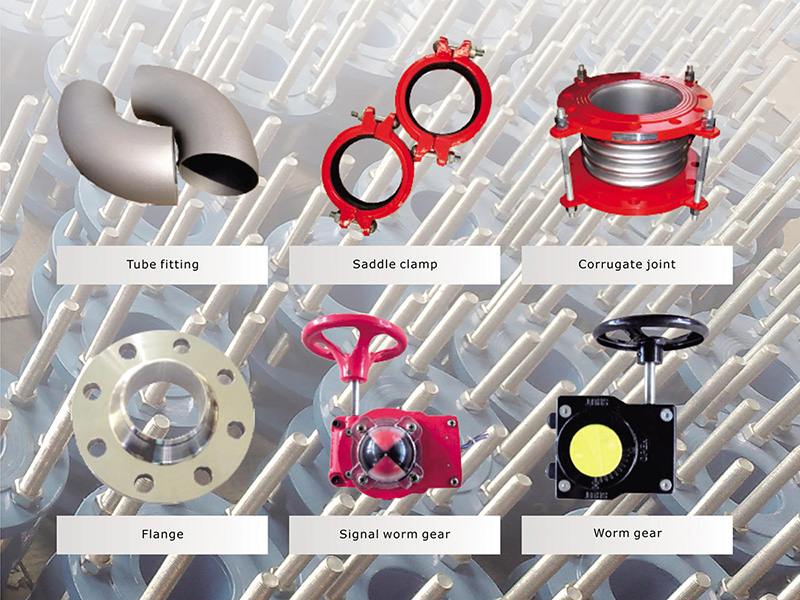Dec . 15, 2024 04:48 Back to list
high performance butterfly valve
The High Performance Butterfly Valve A Comprehensive Overview
In the world of industrial fluid control, efficiency and performance are paramount. Among the various valve types used for regulating the flow of liquids and gases, high-performance butterfly valves have emerged as a favored choice across multiple industries. This article delves into the key features, advantages, applications, and maintenance of high-performance butterfly valves, showcasing why they are essential in modern fluid management systems.
Key Features of High-Performance Butterfly Valves
High-performance butterfly valves are designed with precision-engineered components that ensure superior functionality. One of the most notable features is the valve’s disc. Unlike standard butterfly valves, which often have a resilient seat, high-performance variants employ a metal seat design, allowing for higher pressure and temperature ratings. The disc is typically shaped to minimize turbulence and pressure drop during flow, which enhances efficiency.
These valves are also recognized for their actuating mechanisms. They can be operated manually or automatically through pneumatic or electric actuators, providing flexibility in application. High-performance butterfly valves are built to withstand harsh operating conditions, making them suitable for a range of corrosive and abrasive media.
Advantages of High-Performance Butterfly Valves
One of the primary advantages of high-performance butterfly valves is their compact design. Unlike traditional gate or globe valves, which require more space and support structures, butterfly valves can be installed in tighter spaces. This space-saving design can lead to significant cost reductions in piping layouts.
Another advantage is their low flow resistance. High-performance butterfly valves can achieve a quick shut-off and provide a more precise control of flow rates. This is largely due to their unique disc shape and position within the pipeline. As a result, they are capable of maintaining system efficiency, which is crucial in energy-intensive applications.
Additionally, high-performance butterfly valves are known for their longevity and reduced maintenance needs. The materials used in their construction, such as stainless steel and other high-grade alloys, enhance their durability and resistance to wear and corrosion. This results in fewer replacements and downtime, which can be particularly costly in industrial settings.
high performance butterfly valve

Applications of High-Performance Butterfly Valves
High-performance butterfly valves find applications across a multitude of sectors. In the water and wastewater treatment industry, they are utilized for flow regulation and isolation in various processes. Their capability to handle large volumes of liquid with high efficiency makes them ideal for municipal water systems.
In the chemical industry, these valves serve as an essential component in the control of acidic and corrosive fluids. The robust materials and sealing techniques used prevent leaks, safeguarding both the environment and personnel. Similarly, in the oil and gas sector, high-performance butterfly valves are employed for handling a variety of hydrocarbons, ensuring flow control and safety.
Maintenance Considerations
While high-performance butterfly valves are designed for durability, regular maintenance is crucial to ensure optimal performance. Operators should conduct routine inspections to check for signs of wear or damage. Areas to focus on include the seat materials, seals, and actuators. Lubrication of moving parts is also essential to prevent wear and tear.
Moreover, understanding the specific application conditions—such as temperature, pressure, and the nature of the fluids handled—will further enhance the valve's lifespan and reliability. Implementing a preventive maintenance schedule can mitigate the risk of unexpected failures, ensuring that the system operates smoothly and efficiently.
Conclusion
High-performance butterfly valves are a vital component of many industrial applications, thanks to their unique design, efficiency, and durability. Their ability to minimize space, reduce flow resistance, and lower maintenance costs positions them as the preferred choice for fluid control in numerous sectors. As industries continue to evolve, the role of high-performance butterfly valves is set to grow, further cementing their place in modern fluid management solutions.
Share
-
Reliable Wafer Type Butterfly Valves for Every IndustryNewsJul.25,2025
-
Reliable Flow Control Begins with the Right Ball Check ValveNewsJul.25,2025
-
Precision Flow Control Starts with Quality ValvesNewsJul.25,2025
-
Industrial Flow Control ReliabilityNewsJul.25,2025
-
Engineered for Efficiency Gate Valves That Power Industrial PerformanceNewsJul.25,2025
-
Empowering Infrastructure Through Quality ManufacturingNewsJul.25,2025